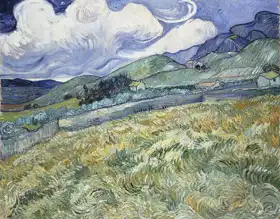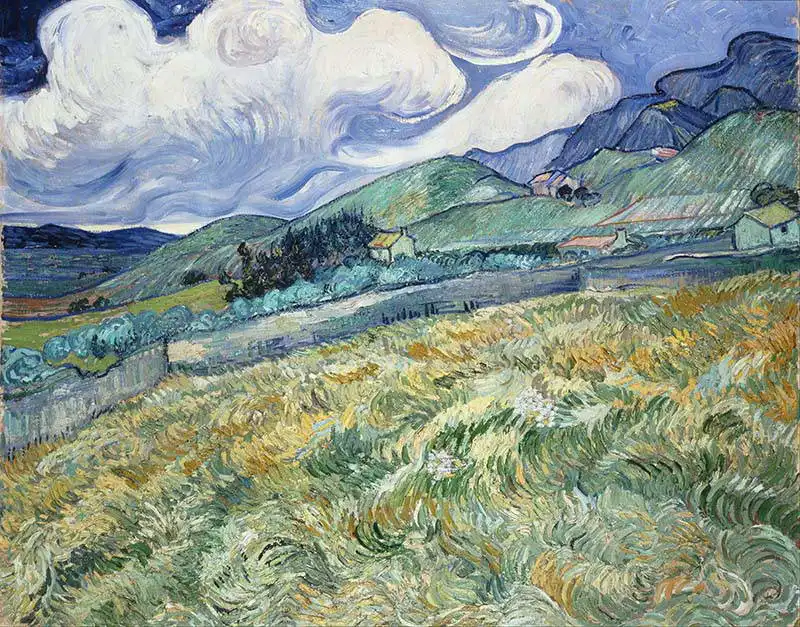About this finishing
Print. The image is printed on the top quality 10-ink HP Z9PS printer on HP matte 270 g / m2 paper. You can choose any size to an accuracy of 1 cm. A margin of 5 cm around the image is added to the size of the motif.


You can find a detailed description about our finishings
here.
Mountainous Landscape Behind Saint-Paul Hospital
Date:
1889Medium:
oil on canvasLocation:
Virginia Museum of Fine Arts, Richmond, Virginia, USADimensions:
88.5 x 70.5In 1889,
Van Gogh was voluntarily admitted to the psychiatric hospital of Saint-Paul-de-Mausole. The motif of these fields, which were supposedly van Gogh's view from the window of the hospital, was worked on by the painter several times in different versions, which differed in light and weather. Clear lines and zigzag brush strokes are typical of Vincent's late work. Rolling clouds herald a less sober kind of work than
impressionism . By painting
landscapes , the painter tried to express the state of his soul, which, similar to the painting, was covered by massive clouds.
Gogh painted picture Mountainous Landscape Behind Saint-Paul Hospital in 1889. Prevailing color of this fine art print is green and its shape is landscape. Original size is 88.5 x 70.5. This art piece is located in Virginia Museum of Fine Arts, Richmond, Virginia, USA. This image is printed on demand - you can choose material, size and finishing.
Vincent Willem van Gogh (1853-1890). Dutch painter belonging to
Post-Impressionism. His paintings (some 900 paintings and 1,100 drawings and sketches) are among the most famous in the world and are sold for exorbitant sums (except for those in our shop).
Parisian Impressionists He lived in Paris from 1886 and was influenced by the use of bright colours - most of his works were painted during this period. In his paintings, Gogh uses contrasting colours (often blue and orange - he said that I want to use colours other contrasts to each of them shone even more to contrast a man and a woman). He was known for his excesses and amputated an ear after the break-up of his friendship with
Gauguin. There is a lot of speculation about this incident (he possibly suffered from heavy metal poisoning from paint that had caused mental problems). In 1890, unfortunately he committed suicide.


